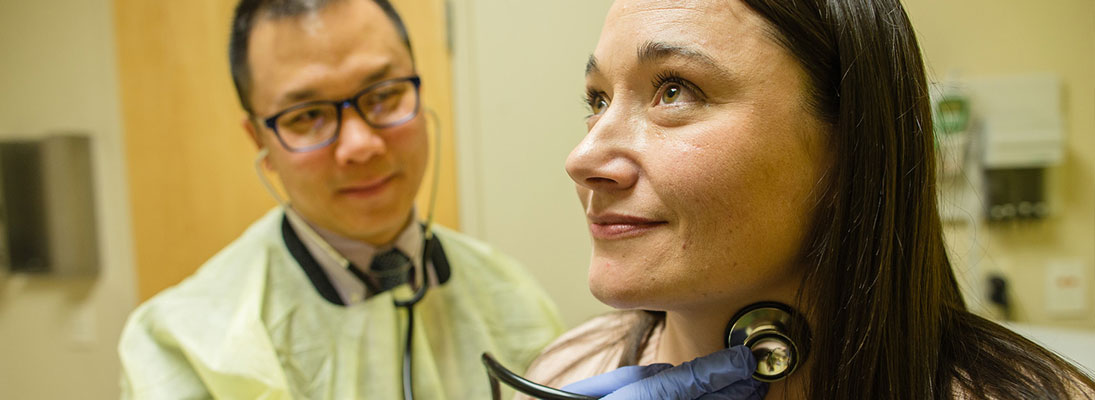
Our orthopedic team works with patients and their families to get patients functional and recovering quickly. Here’s what patients can expect before, during and after surgery:
Before Surgery
We recommend attending the Total Joint Replacement Educational Seminar before surgery. It gives patients a good understanding of the surgery. This education program prepares the patient for what to expect in the hospital, what’s expected of them, who to contact, what to do and not do, and their rehabilitation needs upon discharge. Family or a designated caregiver is encouraged to attend this seminar with the patient so that everyone involved in the care receives education.
Seminar options at Clovis Community Medical Center
Seminar options at Community Regional Medical Center
Pre-admission visit
Once surgery has been scheduled by a patient‘s doctor, they’ll be invited to the hospital for a detailed pre-admission visit. This visit might also be completed over the phone. It’s helpful to make a list of current medications and bring it along. This visit may also involve chest X-rays, an electrocardiogram (EKG), blood tests and a urine analysis. Patients may also be asked to fill out insurance forms, provide the name and address of their emergency contact, and learn about their rights for an advance directive – a patient’s written directions for care should they be unable to make healthcare decisions.
Follow the healthcare team’s instructions about:
- Any medications currently being taken. Include over-the-counter medicines, prescriptions, natural remedies and dietary supplements.
- Asking the doctor what time the day before and morning of surgery to take insulin or heart medications
- Any changes in diet
- Exercises to begin, continue or stop doing
A note about smoking: Nicotine can slow down the healing process so if you smoke, quit. If you’ve already quit smoking, don’t re-start. Also, patients should talk with their doctors before using any nicotine replacements such as a patch or gum.
The night before surgery patients should:
- Stop eating and drinking before midnight to keep the stomach empty. This will help reduce any nausea and vomiting.
- Scrub their hip or knee with a special soap the night before and the morning of surgery. This will reduce the risk of normal bacteria on skin from getting into the incision site.
Preparing for discharge
It’s important to plan for going home before coming to the hospital for surgery. The more preparation done in advance, the smoother a patient’s discharge. Surgeons will not discharge patients until their medical condition is stable. Patients are evaluated daily by the orthopedic team to ensure a safe discharge. Patients need to demonstrate they can walk safely and use stairs (if applicable.) If a patient isn’t able to walk safely by the time of discharge, their physical therapist and social worker will work with them to find rehabilitation services and identify any special equipment that may be needed.
Before coming in for surgery:
- Remove throw rugs or objects on the floor
- Keep commonly used items within reach
- Reposition items to prevent reaching or bending over for them
- Evaluate the sitting area and maneuvering a walker/crutches
- Watch for pets who may jump up
- Determine who will be responsible for transportation home
- Complete grocery shopping and food prep
Surgery day
Arrive at the hospital the day of surgery at the time the surgeon told you to arrive. It’s a good idea to have someone with you who can listen and take notes for you. Report any changes since your last visit. For example, signs of infection or scrapes, cuts or sores. You will be told about your rights for advanced directive, which are your written directions for your care should you be unable to make decisions. If you have a healthcare power of attorney or a living will please bring a copy with you.
When arriving at the hospital patients should check in at the front desk. They’ll be taken to a pre-surgery room. A nurse helps the patient get ready for surgery and goes over any last-minute questions. Next, the anesthesiologist discusses the type of anesthesia to be used. An intravenous catheter is placed to supply the patient with necessary medicines and fluids. A patient may also begin receiving anesthesia through this catheter. Other wires or tubes monitor the body’s functions, remove excess fluid and help a patient breathe during surgery. The hip and knee area is scrubbed with a germ-killing soap. The surgeon begins when the sterilization process is complete.
On the day of surgery bring:
- Eyeglasses, dentures or hearing aids, if used
- Walker, if ordered
- Shoes with non-skid soles and a closed heel
- Knee-length robe
- Clothing that’s easy to put on and comfortable to wear home
- Items asked to bring during the pre-admission visit
After surgery
When a patient wakes up from surgery he/she may feel groggy from the anesthesia and most of the tubes and monitors are still in place. Pneumatic stockings massage the patient’s legs and help prevent blood clots and increase blood circulation. Nurses will keep a close eye to ensure patients are comfortable. If there’s pain, tell the nurse immediately and ask for pain medication. It‘s always easier to prevent and manage pain early, than to catch up once it’s present. When a patient is fully responsive and stable they will leave the recovery area and be taken to the orthopedic unit for their next phase of recovery.
We use cookies and other tools to optimize and enhance your experience on our website. View our Privacy Policy.
